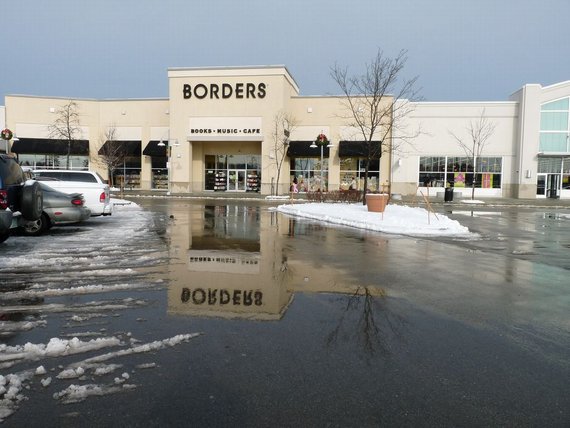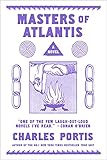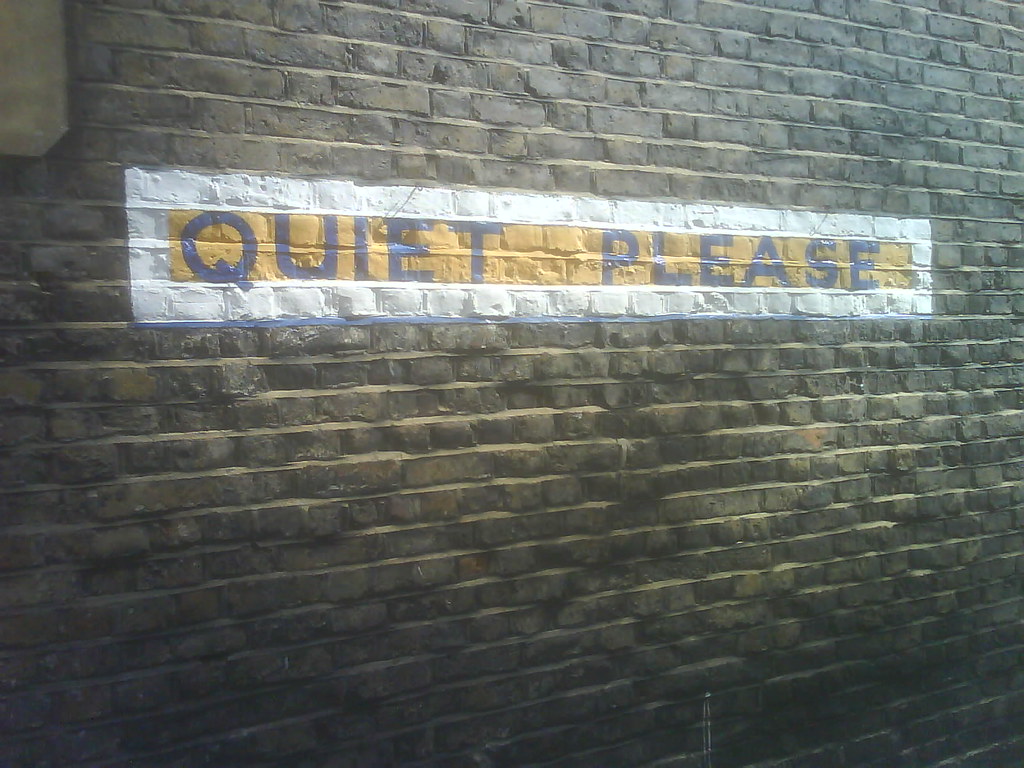
In July 1995, Barnes & Noble opened a 25,000-square-foot superstore in Portage, MI, on a suburban strip teeming with mall complexes and fast food chains. Coexisting among the global brands were a number of independently owned businesses, including John Rollins Booksellers, a much-loved local outfit. Rollins had moved to Portage in 1986, fleeing a withering retail climate in its original location, downtown Kalamazoo. By the time Barnes & Noble set up shop—literally across the street—Rollins had expanded to 13,000 square feet and stocked 80,000 titles.
I was a longtime Rollins devotee—its Kalamazoo store was the first bookstore I remember being in—and feared Barnes & Noble would extinguish not only it, but all independent bookstores in the area, including the Michigan News Agency, where I was then employed. Nevertheless, as someone who loves books in virtually any context or quantity, my resolve slowly faded, and sometime that fall or winter, I paid my first visit to a Barnes & Noble. I walked around for a moment, feeling oddly guilty, then left without buying anything. My boycott didn’t last long.
 Here’s how it is with me: Whenever I show up at a place with books for sale—superstore, indie, thrift store, library basement, street vendor—more than half the time, I’ll leave with at least one. And I go to bookstores at least twice a week. I’ve bought new titles in hardcover, then again in paperback; I’ve bought used copies of books I already own so that I can have all the different covers (in this way I acquired three copies of Charles Portis’s Masters of Atlantis); often I stand gazing at the hundreds of books on my shelves, thinking a single, urgent thought: I need more books.
Here’s how it is with me: Whenever I show up at a place with books for sale—superstore, indie, thrift store, library basement, street vendor—more than half the time, I’ll leave with at least one. And I go to bookstores at least twice a week. I’ve bought new titles in hardcover, then again in paperback; I’ve bought used copies of books I already own so that I can have all the different covers (in this way I acquired three copies of Charles Portis’s Masters of Atlantis); often I stand gazing at the hundreds of books on my shelves, thinking a single, urgent thought: I need more books.
Now and then I’ll make a vow to shop only at independents. I usually stick to it for a month or two. Then I’ll find myself at, say, Barnes & Noble in Union Square (where I will have gone to kill time before meeting a friend), surrounded by “browsers” who’ve practically set up shantytowns in the aisles, pondering a Michael Connelly paperback and deciding, finally, that I must own it.
In years past, Borders was a sanctuary for me, a place to flee the boredom and disappointment of the various office jobs that prevented me from writing my own stuff. Being among books for an hour or more (I was never a model employee)—touching them, leafing through them, and, yes, buying them—helped me to regain a tenuous equanimity and get through the mind-numbing afternoons.
It was largely a coincidence of geography that Borders served this purpose. I worked in the World Trade Center for the last year and a half of its existence and went to the Borders in the Five World Trade complex several times a week. After 9/11, I found myself back downtown—another cubicle, another unfulfilling job—and sought refuge in that store’s replacement, on lower Broadway (I also frequented the Strand’s Fulton Street Annex, now defunct). In 2007, I landed uptown, in the most soul-killing corporate office I’ve worked in. By the end of my first week I was roaming another Borders, on Fifty-seventh Street and Park Avenue.
There was another reason why I was drawn to Borders and happily spent so much money there—the chain, like me, is from Michigan, a state whose economy you may have heard something about. I’ve been to its original store in Ann Arbor many times. So, even on Park Avenue, in one of hundreds of Borders locations worldwide, there remained a dim sense that I was supporting a “local” business. For all these reasons, I was unaccountably depressed when I learned not only that Borders had filed for Chapter 11 protection, but that the list of stores set to close as a result included two of my former havens—lower Broadway, and Fifty-seventh and Park.
Is it odd to mourn the closing of certain big-box stores? You could argue that Borders brought trouble on itself, that after years of outrageous expansion, partnering with Amazon, and failing to keep pace with the rise of e-readers, it deserves whatever it gets. Intellectually, I might agree with you. But as the author of three books, I have an emotional stake in this too.
I’d be lying if I said I wasn’t ecstatic the first time I saw my book at a superstore. No less than seeing it on the shelf of one of New York’s great indies, this signified “making it” to me. Over the years I’ve heard from a fair number of readers who tell me where they first encountered my books. Often they mention one of the big chains. These are actual human book buyers, not numbers in a newspaper article about the death of publishing, and some of these book buyers, I gather, are writing from places where a chain store in a mall is the only game in town.
On the other hand, I’ve developed the kinds of relationships with store owners and staff at independent bookshops that aren’t possible at a chain. Three Lives & Co. in New York, to name just one, has given my books crucial store exposure and word-of-mouth support. It also offers something that would seem like a no-brainer but that no superstore provides: a deeply pleasurable browsing experience. It’s one thing to seek out a public restroom, or to prefer a certain bookstore to your cubicle. Abandoning yourself for long stretches to the sensuous art of aimless browsing is quite another.
As a reader and writer, the current moment is endlessly confusing to me. Sometimes I feel like I’m on a one-man mission to save publishing, buying books weekly from indies and chains alike, for the sake not only of my future work, but that of future writers, young people far from urban centers, dreaming up stories in Texas or Idaho or Michigan.
When I was teenager I spent hours at John Rollins Booksellers, fantasizing about one day seeing my own book for sale there. By the time my first one came out, it was too late. Rollins tried to compete with Barnes & Noble, opening a second, hangar-like location with a cafe across town. That store closed in early 2000, and the Portage store followed soon thereafter. The Michigan News Agency, however, is still in business, as it has been since 1947. They carry a wonderful selection of new paperbacks and a staggering number of magazines. Stop by if you’re ever in Kalamazoo.
(Image: Borders Books Reflected from doortoriver’s photostream)








